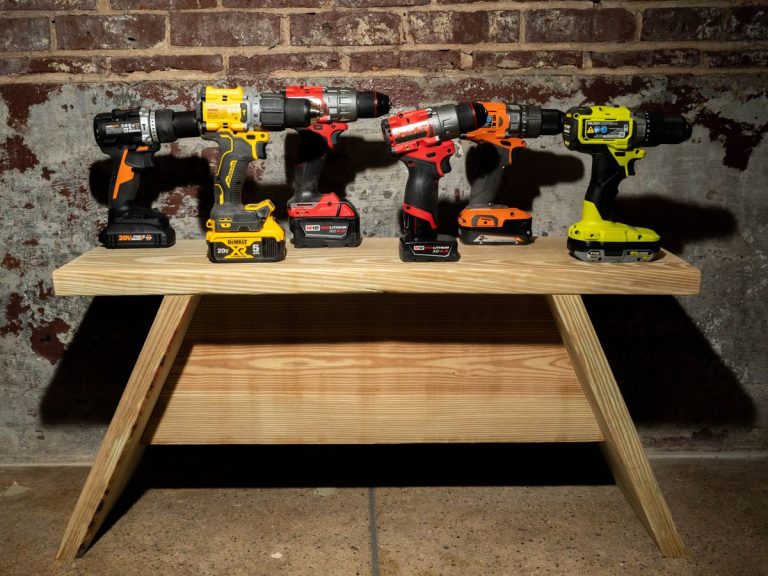Welcome! In this article, we’ll help you choose the perfect power tools for your home improvement projects, ensuring you do the job smoothly, effectively, and safely. Let’s get started!
Understand Your Project Needs
Understand your project needs to choose the right power tools. List your jobs, then research the tools required to complete them efficiently. Not all jobs require power tools, so don’t go overboard with your purchases. Additionally, don’t be swayed by brand names or flashy features – focus on tools that will make your projects easier and more efficient. For example, a planer is a must-have if you’re working with wood but comes in several types, such as electric, handheld, and stationary. Hence, evaluate which planer best suits your needs by considering portability, power, and accuracy.
Corded versus Cordless Power Tools
One significant decision when choosing power tools is whether you prefer corded or cordless options. Corded power tools are usually more powerful and don’t require recharging, making them ideal for long, heavy-duty projects. However, the cords can be cumbersome and limit mobility, making working in tight spaces or outdoors harder.
On the other hand, cordless power tools run on rechargeable batteries, offering more freedom and portability. This is especially useful for tasks around the house where you might need to move frequently or work in tight spaces. However, cordless tools typically have less power and need recharging, which can cause interruptions in your work.
Your decision will ultimately depend on your specific project needs. Generally, invest in corded power tools if you tackle heavy-duty tasks and require consistent power. If you need more mobility, flexibility, and portability within your projects, cordless power tools are a better choice. Of course, combining both types in your arsenal is ideal for accommodating various projects and situations in your home improvement journey.
Essential Power Tools for Home Improvement
When it comes to home improvement projects, there are a few essential power tools that should be in your arsenal. A power drill is versatile and helpful in drilling holes, installing screws, and mixing paint. A jigsaw allows you to make precise cuts in various materials, while a circular saw is perfect for larger cuts. A sander helps smooth surfaces before painting; a planer is crucial for leveling and shaping wood. Lastly, a reciprocating saw makes quick and easy cuts in tight spaces. While this is not an exhaustive list, these tools cover the majority of tasks you may encounter during your projects.
Safety Tips for Using Power Tools
Safety should always be a top priority when using power tools for home improvement projects. Before diving into your tasks, read the owner’s manual for each tool, becoming familiar with their functions and safety measures.
Start by dressing for safety. Wear proper safety gear such as goggles, gloves, and ear protection when necessary. This helps protect you from potential injury. Avoid wearing loose clothing, jewelry, or accessories that could get caught in moving parts. Tie back long hair to prevent it from getting entangled.
Ensure the work area is well-lit, organized, and debris-free. This helps maintain visibility and stability while operating power tools. Always inspect each tool before and after use, checking for damage or defects. Unplug or remove batteries when not in use, especially when changing bits or blades.
Use clamps or a vise to securely hold your workpiece, allowing you to always keep both hands on the tool. Avoid forcing a tool to work faster or push harder than it was designed for, as this can lead to accidents or damage.
Lastly, always be aware of your surroundings and be prepared for the unexpected. Power tools can sometimes go awry, so practicing vigilance and following safety procedures will help keep you safe when working on home improvement projects.
Maintenance and Storage
Maintain and store your power tools properly to ensure longevity and optimal performance. After each use, clean the tools from any dirt or debris and keep them in a dry location away from moisture. Additionally, regularly inspect and replace damaged or worn-out parts, such as blades, belts, and batteries. Stay informed about the recommended maintenance practices for each tool, as some may require periodic calibration or lubrication. Lastly, invest in a sturdy storage solution, like a toolbox or tool cabinet, to keep your tools organized and easily accessible for your next home improvement project.
Investing Wisely
When investing in power tools, it’s essential to make wise choices – not only for your wallet but also for the success of your home improvement projects. First, determine which tools you’ll use frequently and prioritize those. You may want to spend more on high-quality, durable products for the essentials. For less common tasks, consider renting or borrowing tools instead. Remember to read reviews, compare warranties, and look for special offers such as discounts or bundled toolkits. Finally, consider long-term costs like replacement blades, batteries, and maintenance. Making smart decisions ensures your tool collection is versatile, reliable, and suitable.
Conclusion
Choosing the right power tools for your home improvement projects might seem overwhelming initially, but understanding your specific project needs and considering factors like corded versus cordless tools, essential power tools, safety, maintenance and storage, and investing wisely will help you make the best decision. Don’t forget to research the different types of planers available, as this useful tool can significantly enhance your woodworking projects. With the right power tools in hand, you’ll be well-equipped to tackle any project that comes your way, and you’ll be amazed at what you can accomplish.

